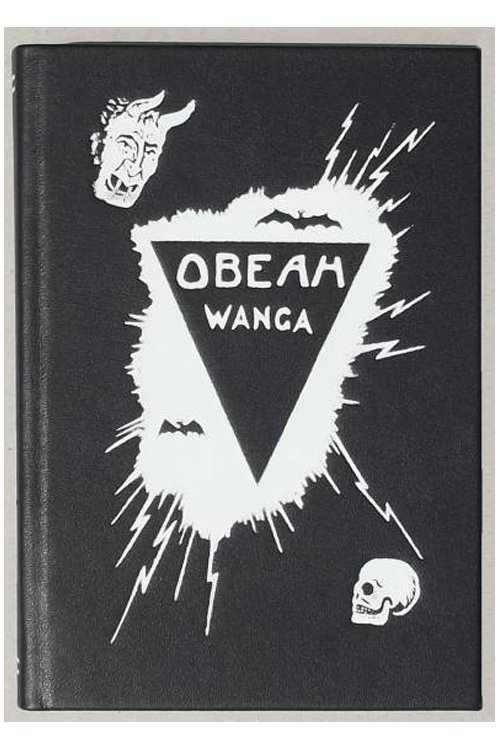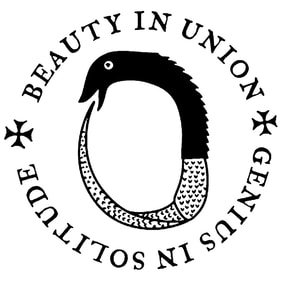
Obeah Simplified
This work was first published in 1895 in Trinidad and achieved instant obscurity, However, it seems that a bell was rung somewhere as 9 years later, on 8th April 1904 Aiwass instructed Crowley that, as well as the mantras and spells and the work of the wand and the sword, he should learn and teach "the obeah and the wanga"

The Ideal Tower
The mystical tower is an archetype expressing human aspiration to the Divine. This book describes that archetype and some of its incarnations in actual towers of stone. Beyond this, the book - in itself - makes manifest the archetype!

Book of Magic
The roots of the Golden Dawn are complex and have been much debated, and will be much discussed in the future as new evidence emerges. It is undisputed, though, that Major F.G.Irwin was an important player in the pre-Golden Dawn occult milieu.

Graveyard Wanderers
The author translated 37 manuscripts books known as “Svartkonstbuchs” [ie black art book} which Scandanavfian practitioner’s of folk magic were expected to possess. This work collects together all those charms and rituals dealing with spirits of the dead and human bones, with the addition of some other relevant material.

Experimentum
In the work Hockley collects a number of rituals, giving some a powerful visual form, akin to a Mandala. In the final ritual, a perilous invocation of Oberion, he records the appearance of the spirit in a grotesque form reminiscent of Edvard Munch’s the Scream.

The Toadman
The Toadmen were a clandestine rural fraternity famed for their mysterious powers, including the control over horses. The author first learnt of their powers form his grandmother as she recounted an incident from when she was a girl.

Magic Secrets
This text first appeared as an appendix to the first edition of the Grimoire of Pope Honorius in 1670. It was reproduced with some additions in the second edition of that title in 1760, and elsewhere. Its significance has been overlooked.

Praxis Magic Faustiana
It is not always realised that when Goethe wrote Faust he was drawing upon an extensive corpus of often quite folky publications concerning the famous yarn. These included grimoires attributed to Faust himself. One was published as a series of 11 lithographs of text and illustration in the middle of the 19th Century in a collection of chapbooks, fairy tales and other popular miraculous literature.

The Society of the Horseman’s Word
This clandestine esoteric society flourished amongst ploughmen in Scotland from the end of the 18th Century until the early 20th. Its members were believed to have supernatural control over horses, and also women and were also associated with witchcraft.

Cyprianus, Key to Hell
There is a long tradition of grimoires being black books, or dark. This manuscript is not part of that tradition. Thee original manuscript was bound in scarlet velvet This facsimile reprint is likewise bound in red velvet.

Solomon’s Clavis
Sibly wrote the original manuscript c.1800, translating its core from French but also writing many additions including a preface and the talisman designs. The text is entirely different from the Key of Solomon as translated and published by McGregor Mathers.

Grimoire to Conjure a Spirit of a Place
The text is remarkable. It seems to describe a ritual that the writer carried out. Protection is sought from a demonic Trinity before Christian powers are used to evoke an infernal spirit, specially associated with the place of the working, into a piglet that is led into a magic circle where it is slain.

Conjuration and an Excellent Discourse of the Nature and Substance of Devils and Spirits
Provides a great deal of general information as to the magical regalia and practices of the conjurors of spirits. Some aspects seem quite modern, for instance a magic circle need only be imagined to be effective. Some of the regalia, such as snakeskin belts and so forth, is rather reminiscent of shamanism.

The Grimoire of Pope Honorius
This is a facsimile of the manuscript belonging to F.G Irwin who was a member of Societas Rosicruciana in Anglia, The Society of Eight, the Fratres Lucis and the Golden Dawn. He was an important figure in the 19th Century British occult milieu.


On the Tarot - Le Monde Primitif
Referring to it as the Book of Destiny, Antoine Court de Gebelin published the first documented essays on the Tarot in his multi-volume French encyclopedia Le Monde Primitif in 1787.

Monas Heiroglyphica
Elizabethan Magus John Dee is an intriguing figure in the history of ideas and the Hermetic Tradition. The Monas Hieroglyphica represents one of his most important works and expounds upon his monadic glyph in a series of 24 theorems in terms of mathematics, magic, kabbalah and anagogy.

Mytho-Hermetic Dictionary
Written 1758 the Mytho-Hermetic Dictionary defines the most obscure of terms, substances and concepts employed by the enigmatic authors of the alchemical texts. Its entries unlock the Hermetic mysteries veiled by the motifs, allegories and symbols of the classical myths as well as making clear what substances are implied by the terms expressed by the Language of the Birds.

Testament of Solomon
Solomon, son of David is famous as being a master of magic and wisdom in many texts of Western Esotericism. His fame extends through Judiasm, Christianity and Islam. The Solomonic grimoire cycle is among the most cited and most used of magical texts and the Testament of Solomon provides a background for one of Solomon’s potent acts, the building of his temple.

Petit Albert
The ‘Little Albert’ is a grimoire and book of secrets first published in France in 1700s. The text ranks as one of the most infamous books in the grimoire corpus, though much of its infamy stems from the 18th century hucksters who populated Rural Europe with copies of their merchandise.
